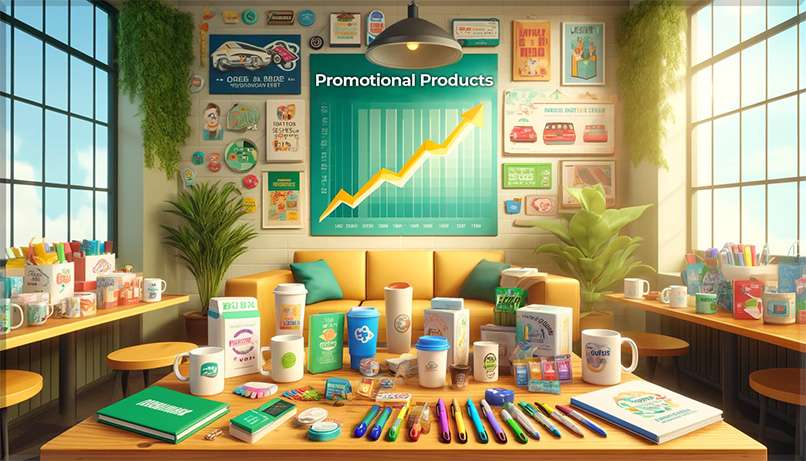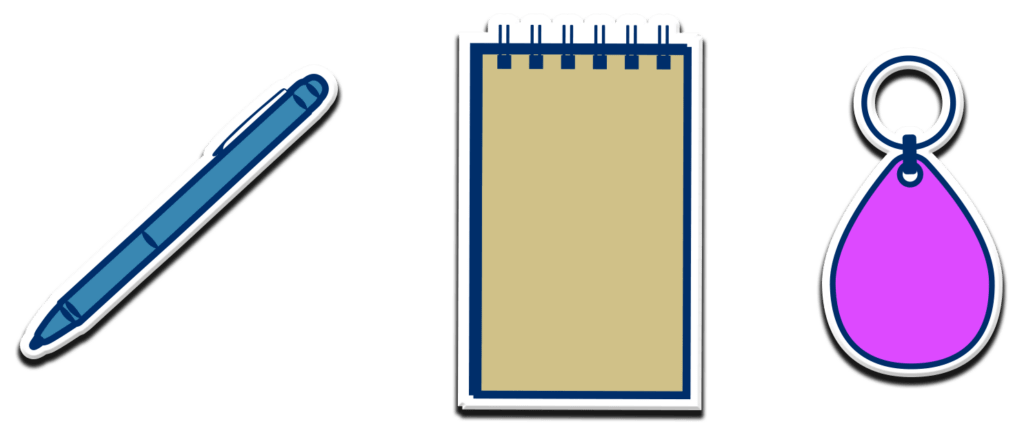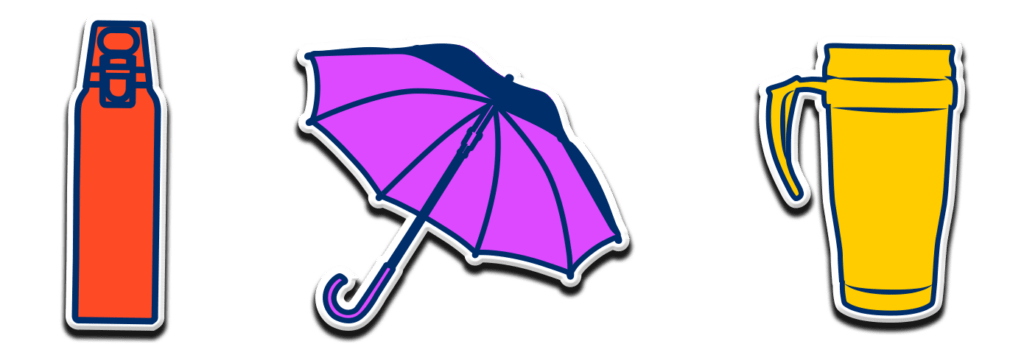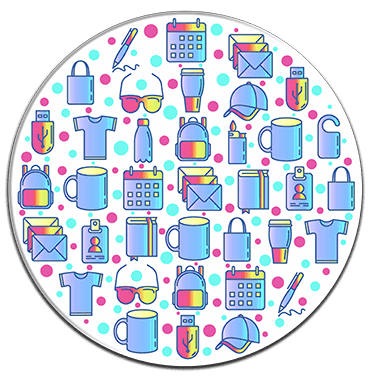
Promotional products have long been a staple in marketing strategies across industries. They offer a tangible connection between a brand and its target audience. Unlike traditional advertisements, promotional products are designed to be useful, engaging, and memorable, making them a powerful tool for building brand awareness and loyalty.
From pens and notepads to high-tech gadgets, the variety and versatility of promotional items available today mean that there’s something for every company, regardless of size or sector. This blog explores the effectiveness of promotional products, delving into psychological principles, statistical evidence, and practical strategies to maximize their impact.
Whether you’re a small business owner questioning the value of promotional items or a marketing professional looking to refine your strategy, this comprehensive analysis will provide valuable insights into how promotional products can work for you.

The effectiveness of promotional products is deeply rooted in basic psychological principles, particularly the law of reciprocity. This principle suggests that when someone receives a gift, they feel compelled to return the favor. This creates a positive association with the giver—in this case, your brand.
Promotional products leverage this innate human response, making recipients more likely to engage with the brand through loyalty, purchases, or word-of-mouth promotion.
Another psychological advantage of promotional products is their ability to enhance brand recall. Physical items have a lasting presence in a person’s environment, serving as constant reminders of your brand. Unlike digital ads, which can be dismissed or forgotten, promotional products are often used daily, reinforcing brand recognition every time they’re seen or used.
While digital marketing strategies have become prevalent, the tangible nature of promotional products offers a unique advantage. Physical items can engage the senses in ways digital advertisements cannot, creating a more memorable and impactful brand experience. This tangible presence can significantly impact a crowded and competitive market.
The effectiveness of promotional products can be quantified through various metrics, including recall rates, conversion rates, and return on investment (ROI). These metrics offer a glimpse into how promotional items perform compared to other marketing strategies, providing valuable insights for businesses considering their marketing spend.
Research consistently shows that promotional products have a high recall rate among consumers. A study conducted by the Advertising Specialty Institute (ASI) found that 85% of people remembered the advertisers of the promotional items they received. This high recall rate is significant compared to traditional advertising channels, where recall can be much lower due to the ephemeral nature of the content.
Promotional products offer a competitive ROI, especially when their longevity and repeated exposure are considered. Unlike a one-time ad that may or may not be seen by the target audience, promotional items continue to make impressions on the recipient and others around them each time they are used.
For example, according to ASI’s Global Ad Impressions Study, a branded tote bag can generate over 5,700 impressions throughout its life. This extended exposure contributes to higher conversion rates as prospective customers become more familiar with the brand over time.
Numerous case studies illustrate the impact of promotional products. One notable example involves a tech company that distributed branded USB drives at a trade show. The company reported a 35% increase in website traffic following the event, with a significant portion of the traffic attributed to clients who received the USB drives.
Another case study from a health and wellness company that gave out branded water bottles at a community event saw a 20% uptick in new client registrations within a month of the event. These real-world examples underscore the potential of promotional products to drive engagement and business growth.
Promotional products vary widely in form, function, and value, each with unique appeal and potential impact. From everyday items like pens and notepads to high-end electronics, the choice of product can significantly influence the effectiveness of your promotional strategy. Here, we categorize these products and discuss their respective impacts.

Low-cost items are the workhorses of the promotional product world. They are affordable, widely used, and easily distributed to a broad audience. Despite their low individual price, these items can offer a high ROI due to their utility and frequency of use. For instance, a branded pen that travels from one person to another extends brand exposure far beyond its initial recipient.
The key to maximizing the impact of low-cost items lies in their quality and relevance; a durable, well-designed pen is more likely to be used and appreciated than a cheaper, low-quality alternative.

High-value promotional products, such as electronics and branded apparel, cater to a more targeted audience and aim to create a lasting impression. These items are often used as rewards for loyalty programs, prizes in contests, or gifts for important clients. Due to their higher perceived value, these products can significantly boost brand loyalty and satisfaction.
For example, receiving high-quality, branded apparel or a useful electronic gadget can make customers feel valued and appreciated, fostering a positive association with your brand.
Niche promotional products are tailored to specific industries or interests, enhancing their perceived value and relevance. For instance, a fitness tracker branded with a health club’s logo is a perfect giveaway for gym members, while custom seed packets can be an effective promotional item for a gardening supply store.
These targeted products serve a practical purpose and reinforce the brand’s understanding and commitment to its customers’ interests and needs.
The effectiveness of a promotional product often depends on its alignment with the target audience’s preferences and lifestyle. Low-cost items boast broad reach and high frequency of use, making them ideal for building brand awareness. High-value items create deeper connections and loyalty while reaching a smaller audience. Niche products, on the other hand, excel in demonstrating brand relevance and expertise within a specific industry.
Choosing the right mix of promotional products involves carefully analyzing your marketing goals, budget, and audience. A diversified approach incorporating different types of products can cater to various segments of your target audience, maximizing overall marketing effectiveness.
Effective use of promotional products goes beyond just choosing the right item. It involves strategic planning and execution to ensure that these products contribute to achieving marketing objectives. Here are key strategies to consider:
Understanding your target audience is the cornerstone of an effective promotional product strategy. Analyzing your audience’s preferences, needs, and lifestyles can help you select items they will value and use.
For example, eco-friendly products may resonate more with an environmentally conscious audience. At the same time, tech gadgets might be more appealing to a younger, tech-savvy demographic. The goal is to choose products that align with your audience’s interests and your brand’s values.
Promotional products should not exist in isolation. It should integrated into your overall marketing strategy. This means aligning the distribution of promotional items with your marketing campaigns, events, or milestones. For instance, if you’re launching a new product, consider giving away related promotional items as a teaser or bonus to create buzz.
Additionally, promotional products can be used to encourage social media engagement, such as offering a branded item in exchange for sharing content or participating in online challenges.

The timing and method of distribution significantly influence the impact of promotional products. Distributing items at industry events, trade shows, or community events can maximize exposure and reach. However, personalized distribution — like sending a branded gift to a client as a thank you — can deepen the relationship and create a lasting impression.
Consider also the seasonal relevance of items; for example, distributing branded umbrellas during the rainy season or insulated water bottles in summer can enhance the utility and appreciation of these items.
The way a product is branded can significantly affect its effectiveness. The branding should be visible but tasteful, enhancing the item’s appearance without overwhelming it. Customization can add an extra layer of value, making the product unique and memorable.
This could involve custom designs that reflect the recipient’s interests or personalizing items with the recipient’s name alongside the brand logo. Such customization increases the item’s appeal and likelihood of being used and shown to others.
One of the primary considerations in using promotional products is the cost versus the benefit. While high-quality, impactful items can command attention and foster loyalty, they also come with higher price tags.
Businesses must balance the desire for standout products with budget constraints, ensuring a positive return on investment (ROI). This involves evaluating the items’ cost and considering production, customization, and distribution expenses. Conducting a thorough ROI analysis, factoring in brand exposure, customer engagement, and potential sales uplift, is essential for making informed decisions.

In an increasingly eco-conscious world, the environmental impact of promotional products is a growing concern. Traditional promotional items, especially those intended for single use or made from non-recyclable materials, can contribute to waste and environmental degradation. Companies are, therefore, encouraged to consider eco-friendly alternatives, such as products made from sustainable materials or items that encourage reusable practices.
Furthermore, ethical sourcing ensures products are produced under fair labor conditions, positively reflecting the brand’s values and enhancing customer trust.
The promotional products industry is dynamic, with trends and consumer preferences constantly evolving. Staying abreast of these changes is crucial for maintaining relevance and engagement. This includes not only the types of products that are popular but also emerging technologies for customization and distribution.
For example, augmented reality (AR) enabled products or items with smart technology integrations can offer unique, interactive brand experiences. Innovation in product design, branding techniques, and sustainability practices can also set a brand apart, making its promotional items more desirable and effective.
Promotional products stand out as a unique marketing tool that bridges the gap between brands and their target audience through tangible, memorable interactions. The psychological principles of reciprocity and enhanced brand recall, backed by statistical evidence of effectiveness, illustrate the profound impact these items can have on marketing outcomes.
From low-cost, high-utility items to high-value, branded gifts, promotional products’ variety and flexibility ensure that there is a solution for every marketing challenge and budget.
The effectiveness of promotional products is not in question; instead, it’s about maximizing their impact. Through careful selection aligned with audience preferences, strategic integration into broader marketing campaigns, and mindful consideration of timing and branding, promotional items can significantly enhance brand visibility, customer loyalty, and, ultimately, business success.
Moreover, addressing challenges such as cost management, environmental responsibility, and staying abreast of trends and innovations is crucial for optimizing the benefits of promotional products.
The effectiveness of promotional products is not in question; instead, it’s about maximizing their impact. Through careful selection aligned with audience preferences, strategic integration into broader marketing campaigns, and mindful consideration of timing and branding, promotional items can significantly enhance brand visibility, customer loyalty, and, ultimately, business success.
Moreover, addressing challenges such as cost management, environmental responsibility, and staying abreast of trends and innovations is crucial for optimizing the benefits of promotional products.
For maximum relevance and impact, tailor your choice of promotional products to the interests, needs, and values of your target audience.
Use promotional items as part of a cohesive marketing strategy, enhancing and reinforcing your brand message across all channels.
Invest in high-quality, environmentally friendly promotional products that reflect positively on your brand and appeal to a socially conscious consumer base.
Leverage the latest trends and technologies to create unique, personalized promotional items that stand out and create memorable brand experiences.
Continuously evaluate the effectiveness of your promotional products through feedback and performance metrics, adjusting your strategy as needed to ensure the best return on investment.
In closing, promotional products work effectively when strategically chosen, thoughtfully integrated, and responsibly managed. By following these guidelines, businesses can leverage promotional items to achieve their marketing goals, build deeper connections with their audience, differentiate their brand, and navigate the competitive landscape with creativity and impact. Check out our blog for further insights on “What promotional products work the best for marketing?“

This comprehensive report highlights the effectiveness of promotional products through various metrics such as the number of impressions over a product's lifetime, cost per impression, product longevity, and the positive impact on the advertiser's business. It includes specific insights on popular promotional items like drinkware, outerwear, umbrellas, T-shirts, power banks, polo shirts, bags, performance wear, USB drives, desk accessories, headwear, writing instruments, calendars, and health products. Each category is detailed with information on impressions, consumer retention, and the likelihood of consumers doing business with the advertiser post-receipt. Additionally, the study presents the preferred methods of advertising by age bracket and geographic region, highlighting the popularity of Made-in-USA and sustainable products.
The 2022 ASI Ad Impressions Study provides a detailed breakdown of the most influential promo products by region and state, offering a closer look at how geographic location influences promotional product impact. For instance, outerwear is highly influential in the Northeast. At the same time, performance wear is seen as a greater preference in the Southwest. Such detailed regional analysis aids in tailoring promotional product strategies to fit specific market preferences, enhancing the effectiveness of marketing campaigns
Another ASI report, based on a survey of nearly 25,000 consumers nationwide, underscores the power and effectiveness of promotional products. This study reaffirms promotional items' value, showing how recipients appreciate, desire, and value them. It provides distributors and businesses with definitive data on the reach and effectiveness of promotional products, further emphasizing their incredible return on investment for companies of every size.